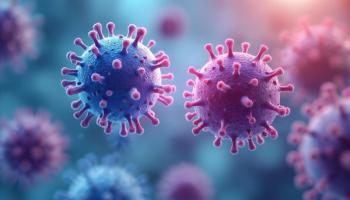
Direct Delivery of Cancer Drugs May Improve Treatment, Reduce Side Effects
Ligand-guided protein cages kill more than 70 percent of lung cancer cells during testing.
Ligand-guided protein cages kill more than 70 percent of lung cancer cells during testing.
The harsh side effects of cancer drugs have long presented a difficult hurdle for patients to overcome to remain adherent to therapy.
However, a unique treatment approach may be able to overcome this issue while also improving the efficacy of cancer drugs.
Investigators from Washington State University developed a miniscule protein cage that delivers harmful chemotherapy drugs directly to cancer cells, which diminishes adverse events from the drugs and bolsters their efficacy.
A study published in Biomaterials Science showed how the direct delivery system was constructed utilizing apoferritin, a ball of natural proteins that transports iron in the blood without letting it leak out.
Apoferritin consists of pieces that can open and close based on surrounding acidity. The study was the first to evaluate apoferritin in the treatment of lung cancer cells.
Investigators inserted the drug daunomycin into the protein cage and modified its exterior with a ligand, which made it appealing to common cancer cell receptors.
After adding a small amount of acid to adjust the pH to below neutral, the cage opened slightly to allow daunomycin to gain entry to the interior.
When the cage encountered an acidic cancer cell environment, the cage opened to directly deliver the drug.
During testing, investigators found ligand-guided protein cages are able to selectively target and eliminate more than 70% of lung cancer cells without attacking healthy cells.
This showed similar, and in some cases superior, efficacy than when the drug traveled separately from the cage.
The system is still far off from testing in humans, as future research in animals will further evaluate the efficacy of protein cages.
"Our efficiency in killing the cancer cell was very high with no toxicity to normal cells,'' said study lead Yuehe Lin, a professor in the WSU Voiland College's School of Mechanical and Materials Engineering. "At the cell level, we were able to demonstrate it was very effective.''
Newsletter
Stay informed on drug updates, treatment guidelines, and pharmacy practice trends—subscribe to Pharmacy Times for weekly clinical insights.


















































































































































































































